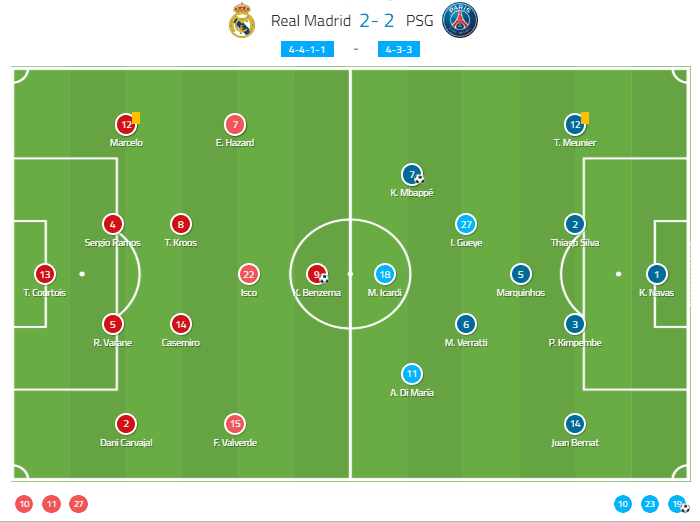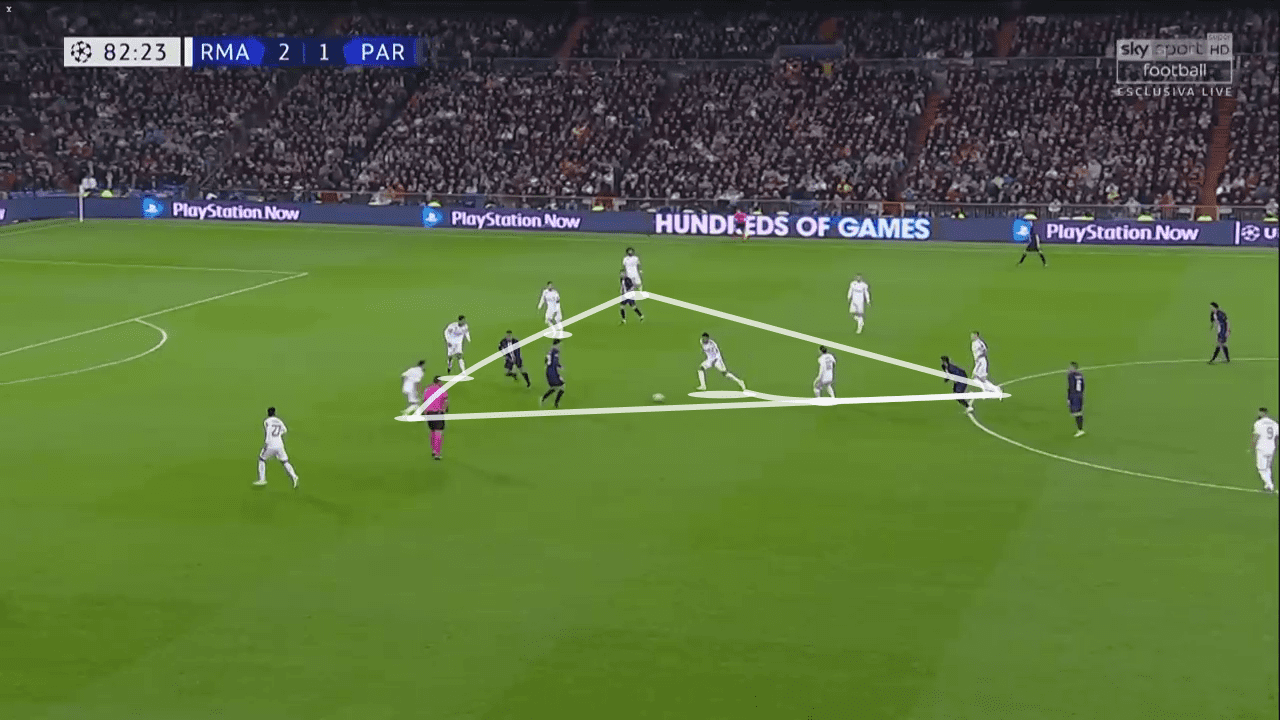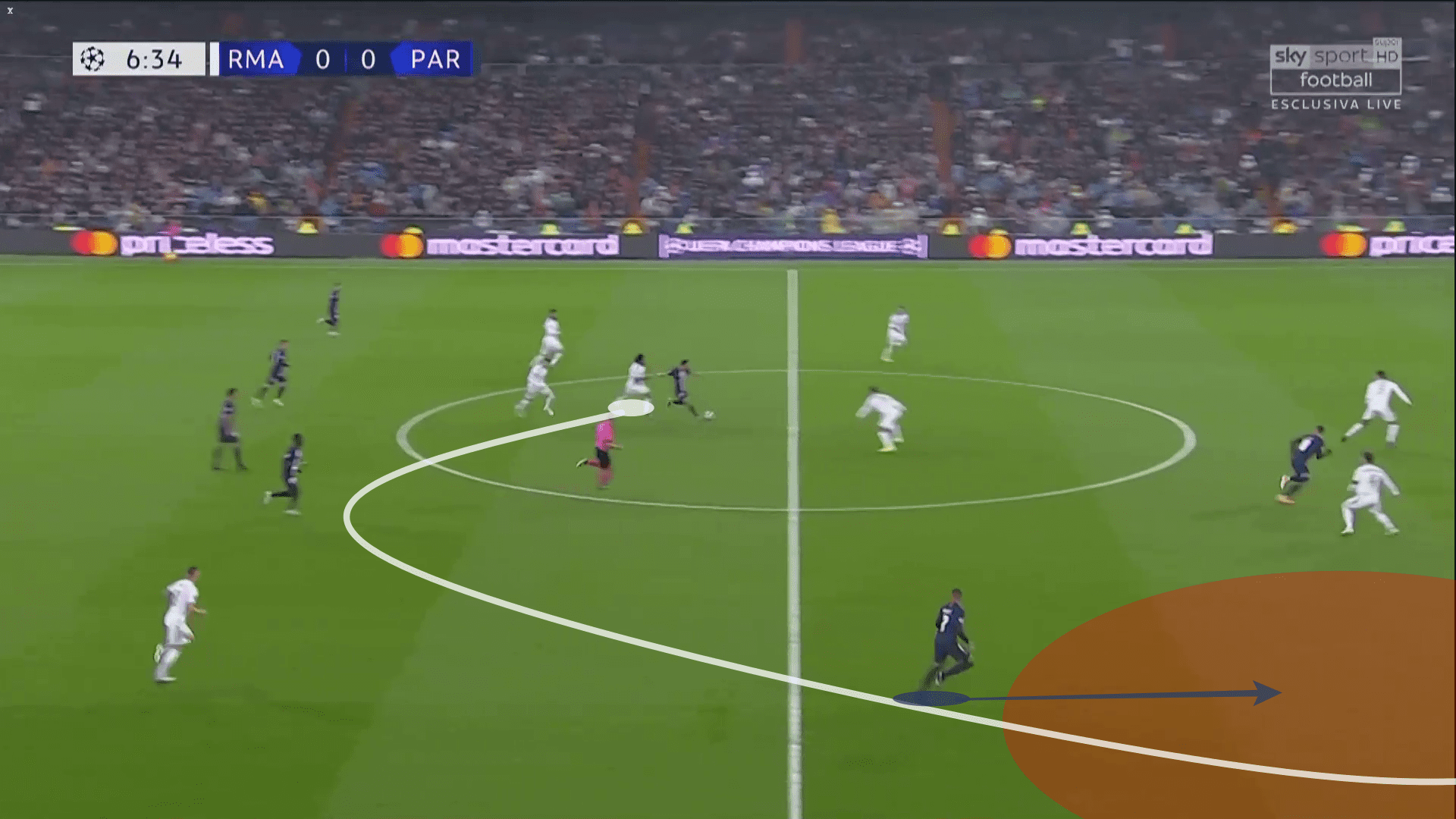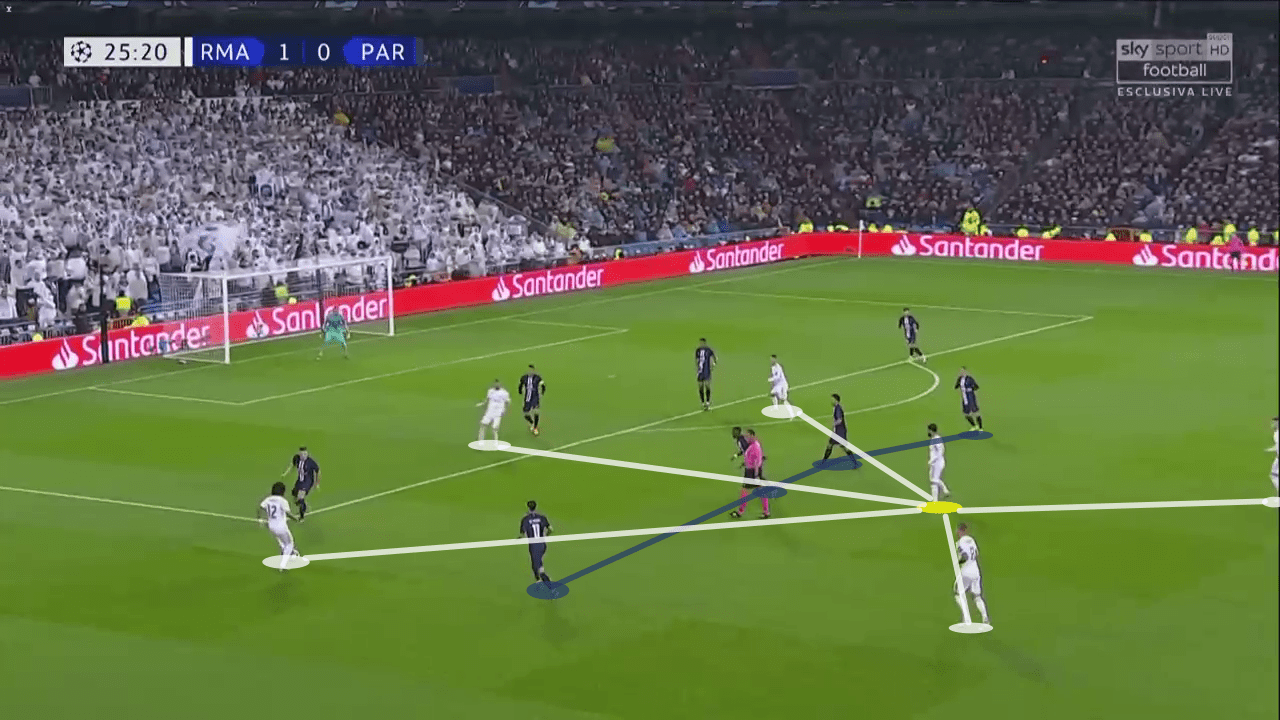A clash of titans in the UEFA Champions League would end up being a run-out with both sides already qualified for the next round of the competition by the time their game kicked off at the Estadio Santiago Bernabéu, but it was clear that Real Madrid were out for revenge over PSG after their thrashing in Paris earlier on this season.
Karim Benzema gave his team the lead with a poacher’s finish in the first half, adding a second deep into the second half which seemed to leave the game tied up. However, just four minutes later, PSG had drawn level thanks to goals from Kylian Mbappe and Pablo Sarabia.
This tactical analysis will consider the tactics of both Zinedine Zidane’s Real Madrid and Thomas Tuchel’s Paris Saint-Germain, providing analysis of both teams and their set-ups as they settled for a draw in the UEFA Champions League.
Line-ups

Real Madrid surprised PSG with their line-up as Isco was included in midfield, creating a more organised midfield unit with Federico Valverde being deployed towards the right but in a far less offensive role than the likes of Rodrygo Goes could have offered.
PSG lined up as expected, with Kylian Mbappe deployed in a wide position to capitalise on the poor discipline of Real Madrid’s full-backs, whilst Neymar was left on the bench for the start of the game with Ángel Di Maria preferred.
Valverde’s importance
Playing in a different role to usual on the right hand side, Valverde was once again instrumental for the 79 minutes that he was on the field. With 84 actions in total, his second highest figure of the season, and 38 received passes, another figure which has only been surpassed twice this campaign, he was still a key man in Real Madrid’s engine room. Intriguingly though, his presence was perhaps most harshly felt following his withdrawal from the game to be replaced by Rodrygo.
Whilst the Brazilian did get back to the track and defend, it was not his performance which created the problem which led to Real Madrid’s downfall, with two goals conceded in three minutes after Valverde was taken off. Rather, it was the absence of his role in the set-up, with Real Madrid’s midfield suddenly becoming very narrow and without the energy and press which had been offered by the Uruguayan. Combined with a narrow defence, as can be seen in the below example, Real Madrid lacked width and were immediately left vulnerable as PSG switched possession.

Having the midfield three almost lined up in a straight line in their own half was reflective of the concerns about Real Madrid’s organisation and structure late on in games. Valverde has been in fine form, but without him, their set-up was not the same. Zidane must take the blame for this change, with Rodrygo seemingly unprepared to fulfill a similar role in the all important matter of linking up in defensive play with his midfield team-mates.
Mbappe takes advantage of sloppy full-backs
The poor positioning of Real Madrid’s full-backs, particularly Marcelo, was an area that Tuchel clearly looked to focus upon from the off. In fact, all three of PSG’s counter-attacking moves came down the right flank, focusing on the gaps left behind by the Brazilian, with two of them coming in the first seven minutes. Using Mbappe’s vision and pace, it became easy for PSG to disrupt Real Madrid’s midfield block and find spaces in the defence which were not covered as Eden Hazard failed to provide adequate cover. With 14 possession losses, his highest this season, the weakness of Marcelo’s forward runs was clearly targeted upon by Tuchel.
As can be seen in the below example, Marcelo carried the ball forwards into a central area and lost the ball, with the PSG midfield immediately looking to Mbappe making his run down the flank. With Mauro Icardi well positioned to distract both Raphael Varane and Sergio Ramos, it allowed Mbappe the split second of hesitation that meant that he could get ahead down the flank into some real space to pose an immediate threat.

Such movement and link-up play between PSG’s front three was a clear reason why Neymar was left out. Once introduced, play became more disrupted and more about controlling possession and dribbling rather than these counter-attacking runs down the flanks. Mbappe was essential to that element of PSG’s play, later switching flanks and going into a central role in order to continue to baffle the Real Madrid defenders whose organisation continued to leave question marks.
Isco’s midfield role
One of the most surprising decisions from Zidane came in his move of selecting Isco in the Real Madrid midfield, springing a surprise on Tuchel. It was only his second start since August, with the only other start being the 1-0 defeat to RCD Mallorca. Despite that, he played a crucial role and was heavily involved in both goals, hitting the post and allowing Benzema to score for the first and then being involved in the build-up to the second.
His role was an important one as he positioned himself in front of Kroos and Valverde, allowing them to maintain their discipline in a more defensive role, with Isco taking up the role of chief creator. Sitting behind the PSG midfield four when they formed a low block, he would stay central and look to distribute and switch the ball from one flank to another, going from benchwarmer to dictating the rhythm of the Real Madrid side in a big fixture.

Out of position, he also played a vital role. His role was clearly to press Marquinhos in the holding midfield role and look to prevent him from playing the ball out from the back. Making four recoveries, with three in the other half, a higher figure than in any other fixture since April 2018, he played that role effectively. That kind of contribution and work rate is just what Zidane has been looking to get from Isco.
With 0.64 xG himself, it could be said that Isco should have done better when looking to break into the box, yet that would be harsh on a player who produced an influential performance despite his lack of recent game time. Should he be able to use this opportunity to capitalise and re-establish himself in the side, it could prove to be a major turning point in his career.
Conclusion
For 80 minutes, this was one of Real Madrid’s best performances of the season. Free-flowing attacking play, with Isco dictating the tempo and Valverde providing an energetic spark from the middle, Real Madrid found the depth in their squad that they need to provide a real test for PSG and, indeed, come out on top.
After that point, however, particularly following the withdrawal of Valverde, Real Madrid lost their structure and shape, allowing PSG back into the game with their rapid counter-attacks and movement down the flanks which had been left abandoned by the changes to Real Madrid’s midfield shape, without the defence adapting to match. Rarely does Zidane get things so wrong, but there are reasons for Real Madrid fans to be optimistic given their start, whilst PSG fans can take pride from their late comeback which provided the energy and incision which Real Madrid had failed to provide.

If you love tactical analysis, then you’ll love the digital magazines from totalfootballanalysis.com – a guaranteed 100+ pages of pure tactical analysis covering topics from the Premier League, Serie A, La Liga, Bundesliga and many, many more. Buy your copy of the November issue for just ₤4.99 here




Comments